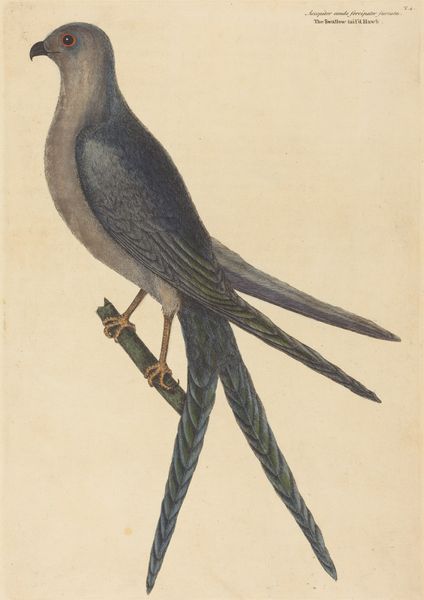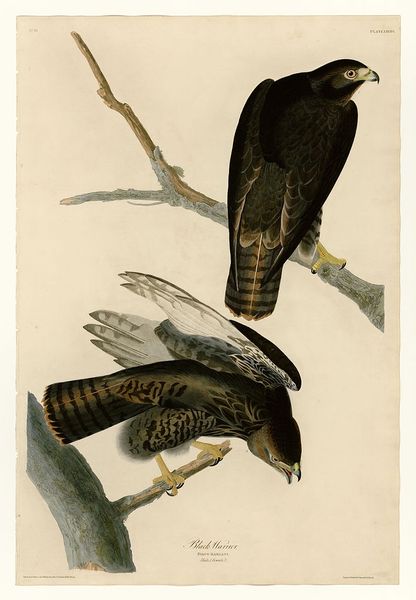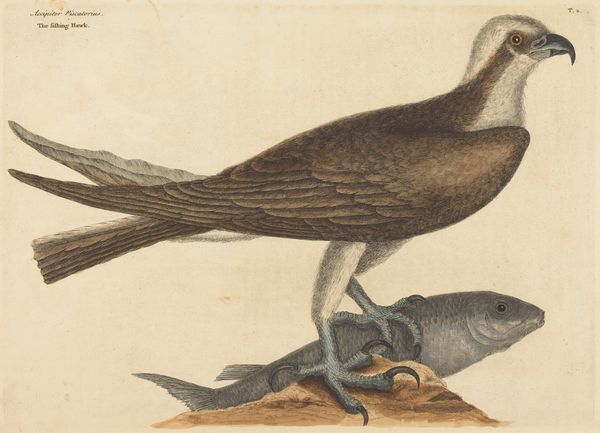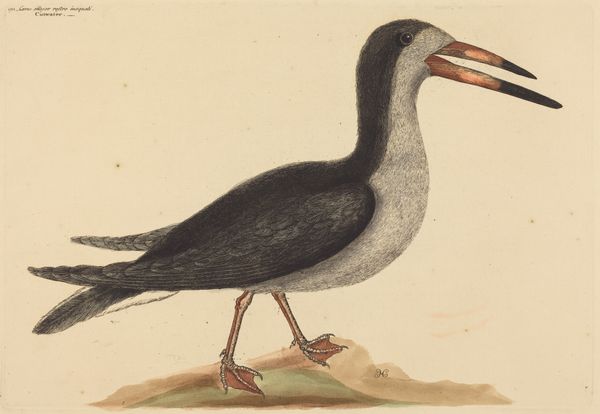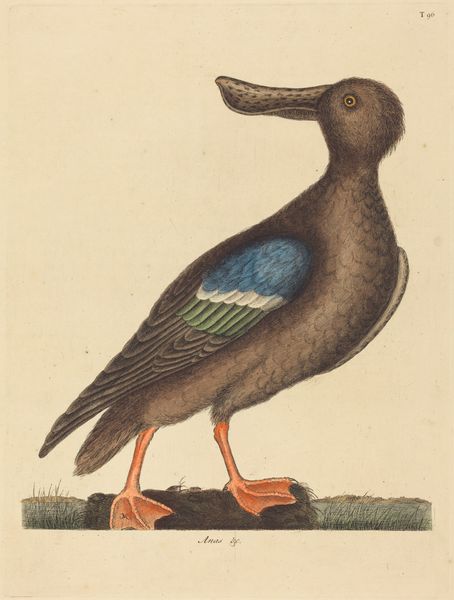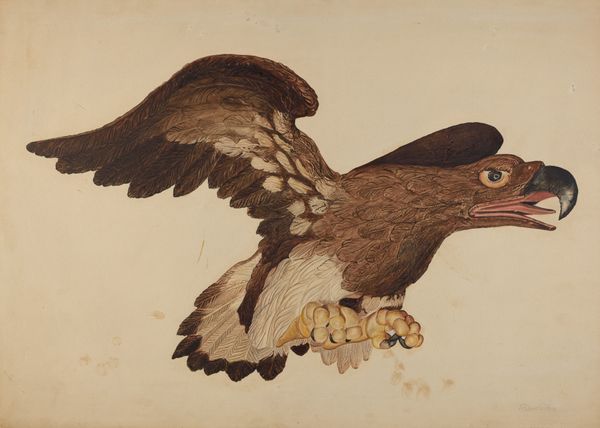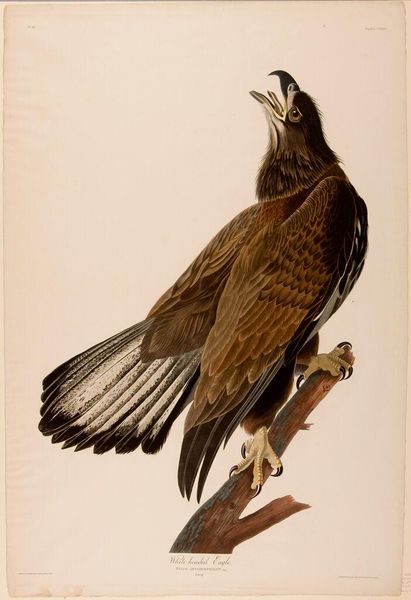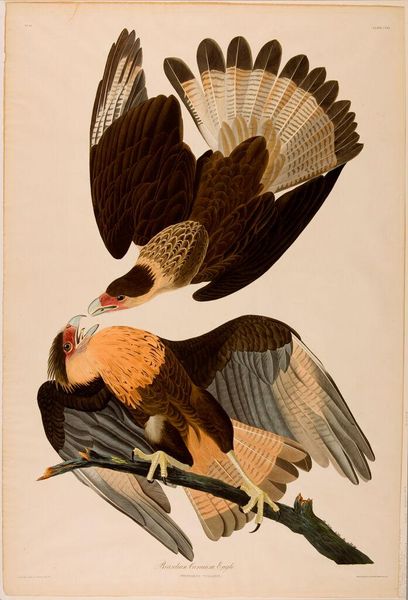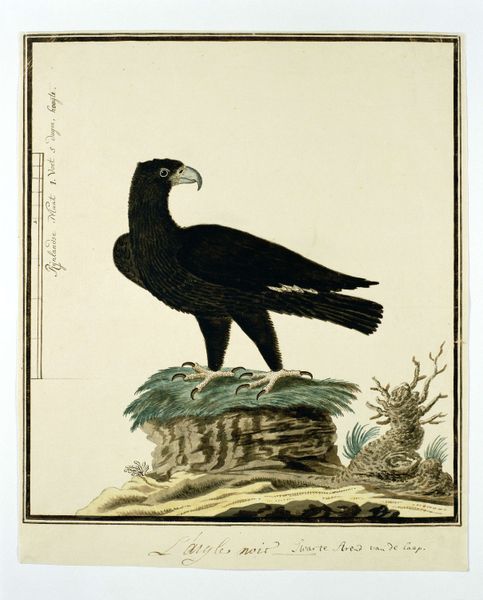
coloured-pencil, print, watercolor
#
coloured-pencil
# print
#
landscape
#
figuration
#
watercolor
#
coloured pencil
#
watercolour illustration
#
naturalism
#
watercolor
Copyright: National Gallery of Art: CC0 1.0
Editor: So, here we have Mark Catesby's "The Booby (Pelecanus Sula)," a colored-pencil, watercolor and print piece possibly from between 1731 and 1743. It feels very precise, almost clinical in its detail of the bird, but I also find something charmingly naive about the landscape in the background. What's your read on this piece? Curator: Well, firstly, isn’t “Booby” a fantastic name for a bird? I immediately imagine Catesby chuckling to himself as he painstakingly rendered each feather. But you're right, there's this lovely tension between scientific accuracy and artistic interpretation. The isolated head study, almost like a diagram, contrasts beautifully with the full figure perched upon that somewhat whimsical outcrop. Do you find that tension contributes to the piece’s overall… vibe? Editor: Definitely! It makes it feel like a mix of science and art. It isn't quite photorealistic in the way we think about today, but it has so many details that you feel you are there. It makes it feel both familiar and also completely new. Curator: Precisely! And consider the historical context: Catesby was documenting a "New World," sharing previously unseen flora and fauna. These images weren't just art, they were vital sources of information, fueling the scientific and artistic imaginations of Europe. They wanted it accurate but of course they'd paint a little bit of personality. Editor: It's fascinating to think about this as visual data collection. I've always thought of naturalism being boring. So the context provides a completely new level of understanding that had always been lost on me. Curator: Exactly! Next time, remember not to rely on a name when assessing a style, or an era. There are so many levels here to unpack. Who knows what new angles we can approach?
Comments
No comments
Be the first to comment and join the conversation on the ultimate creative platform.
